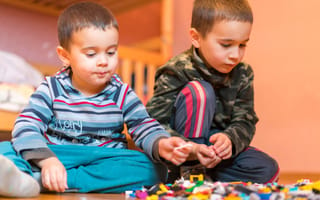
Neuromotor and cognitive developmental disabilities are common among children born prematurely. Harvard SEAS reports that researchers from the university’s Paulson School of Engineering and Applied Science have created a soft, non-toxic wearable sensor that can help doctors diagnose these disabilities early and reduce their impact.
“We have developed a new type of conductive liquid that is no more dangerous than a small drop of salt water,” Siyi Xu, a graduate student at SEAS and first author of the paper published in Advanced Functional Materials, said to Harvard SEAS. “It is four times more conductive than previous biocompatible solutions, leading to cleaner, less noisy data.”
Their research was conducted in collaboration between the school, The Wyss Institute for Biologically Inspired Engineering, Beth Israel Deaconess Medical Center, and Boston Children’s Hospital.
As one can imagine, toddlers are fussy and curious so bulky devices made of toxic materials are a no-go, particularly given the higher rate of skin sensitivity in this cohort.
“We often see that children who are born early or who have been diagnosed with early developmental disorders have highly sensitive skin,” said Eugene Goldfield, coauthor of the study and an Associate Professor in the Program in Behavioral Sciences at Boston Children’s Hospital and Harvard Medical School and Associate Faculty Member of the Wyss Institute at Harvard University, to Harvard SEAS. “By sticking to the top of the finger, this device gives accurate information while getting around the sensitively of the child’s hand.”
“Early diagnosis is the name of the game when it comes to treating these developmental disabilities and this wearable sensor can give us a lot of advantages not currently available.”
“Early diagnosis is the name of the game when it comes to treating these developmental disabilities and this wearable sensor can give us a lot of advantages not currently available,” Goldfield added.
Testing the use of this sensor on children is the next step for this research team.
“The ability to quantify complex human motions gives us an unprecedented diagnostic tool,” Rob Wood, the Charles River Professor of Engineering and Applied Sciences at SEAS, Founding Core Faculty Member of the Wyss Institute, and senior author of the study, told Harvard SEAS. “The focus on the development of motor skills in toddlers presents unique challenges for how to integrate many sensors into a small, lightweight, and unobtrusive wearable device. These new sensors solve these challenges – and if we can create wearable sensors for such a demanding task, we believe that this will also open up applications in diagnostics, therapeutics, human-computer interfaces, and virtual reality.”






